Estimated reading time: 10 minutes

Fruit trees are one of the highlights of any homestead, and it’s easy to see why: a mature fruit tree can produce tens of pounds of delicious fruit each spring that can be dried, canned, juiced, and otherwise preserved.
But what if you are homesteading in a rental or you aren’t ready to plant fruit trees in the ground? What if you want to experiment with different varieties to see how they perform? And of course, what about tropical trees and citrus in temperate areas that endure hard freezes in the winter?
The answer to all of these considerations is simple: plant fruit trees in five-gallon buckets. Most fruit trees only really need a 5-gallon growing space to produce fruit. Five-gallon buckets are inexpensive and sometimes even free.
What’s more, bare-root trees are the most economical option available, and if you wait until the end of the planting season (late spring), you can often find top-shelf trees at bargain-basement prices.
While you can seek out dwarf varieties, bucket-growing will force a full-size variety to stay small. If you think you may want to transplant into the ground one day, stick to standard varieties.
The most critical part of growing fruit trees in buckets is starting with good soil and maintaining soil moisture. You can make your own potting mix using lava rock or decomposed granite, perlite or vermiculite, and well-broken down compost. Avoid coconut coir as it dries out too quickly.
You can use peat moss to lower soil PH, but it is not a sustainable product. Drill adequate drainage holes in your buckets and top dress your soil with a thick layer of mulch to hold moisture in.
Here are the best fruit trees to grow in buckets, listed in order of difficulty from easiest to most challenging. The zone is included in case you hope to plant in the earth one day.
Apples – Zones 3 to 8
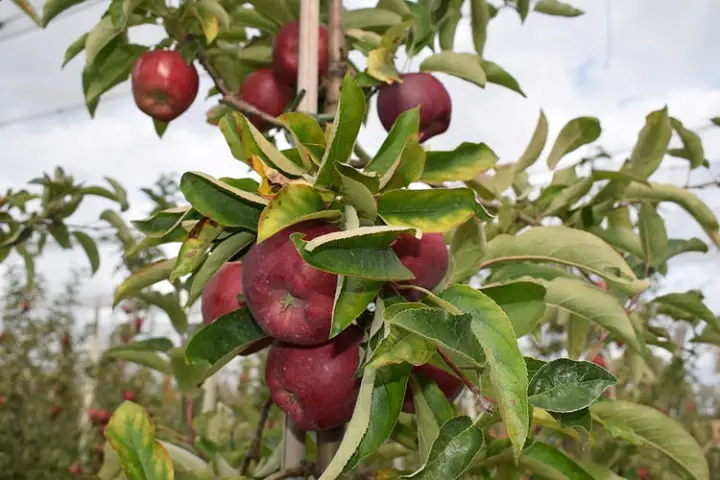
Choose a variety suited to your climate (low of high chill hours), and consider planting a few trees for cross-pollination. Place in full sun and water regularly, but avoid overwatering.
Fertilize every few weeks during growing season, reduce in fall, and stop in winter. Wrap the bucket in bubble wrap to protect the roots from freezing.
Apricots – Zones 4 to 8
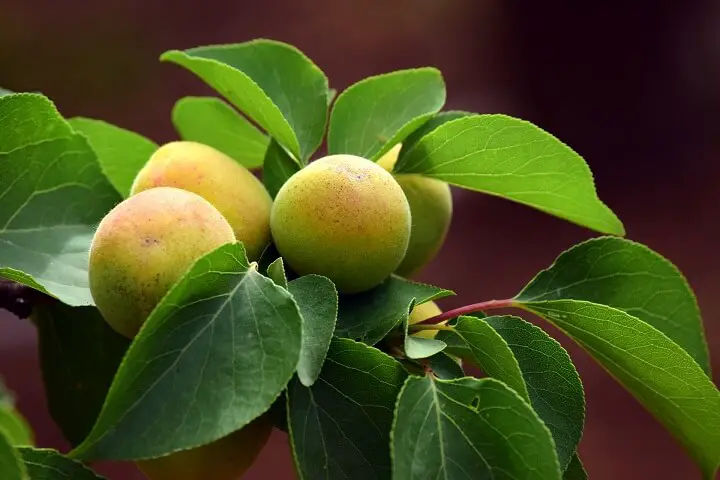
Place in full sun and water regularly–do not let the roots dry out. Prune once in spring and once in summer to thin out branches and prevent crisscrossing. Fertilize in early spring with a liquid fertilizer.
Banana – Zones 9-11

Technically, bananas aren’t trees—they’re giant herbs—but they thrive in buckets! Dwarf banana varieties, such as Dwarf Cavendish, grow well in pots and produce fruit within a year.
Bananas need rich, well-draining soil, full sun, and consistent moisture. Water frequently and fertilize monthly with a balanced fertilizer. Protect from frost, and bring indoors when temperatures drop below 50°F.
Cherry/Bush Cherry – Zones 5 to 7
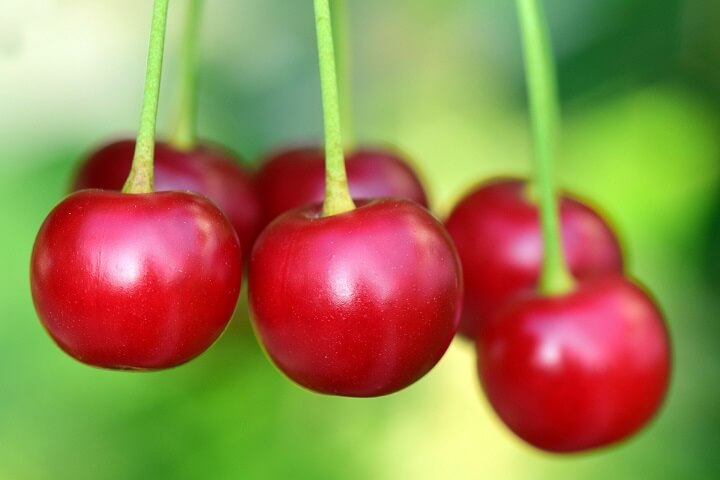
Choose a self-pollinating variety or plant multiple varieties for cross-pollination. Place containers in full sun and keep well-watered and fertilized (with a high potash liquid fertilizer) during growing season.
Citrus – Zones 8-10
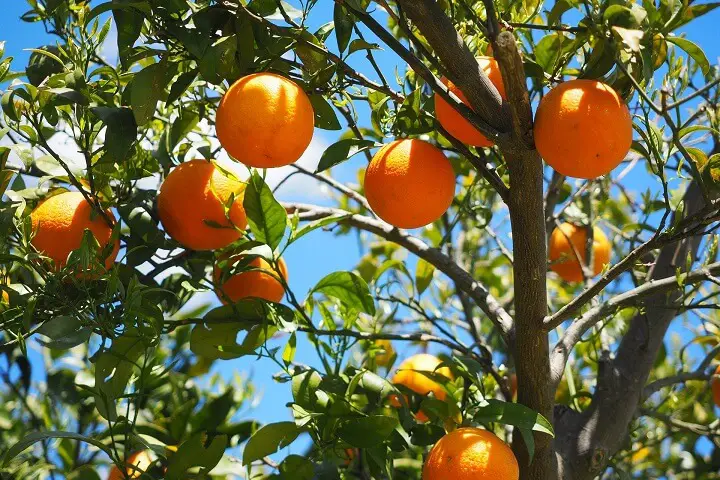
All citrus plants grow well in containers. Maintain a soil PH from 5.5 to 7– a little on the acidic side. Keep in full sun, away from strong wind and maintain consistent soil moisture for strong fruit production.
Pinch growing tips when they reach five inches to encourage bushy growth, and fertilize monthly during growing season with a water-soluble fertilizer that contains micronutrients. Citrus trees must be protected from freezing.
Fig – Zones 8-10
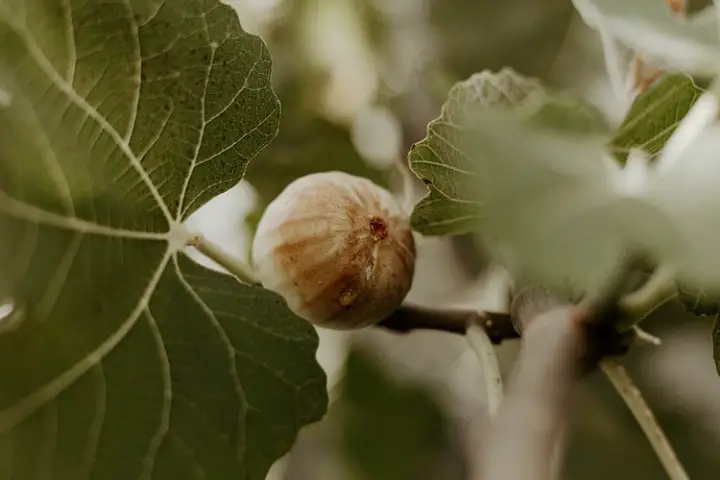
Place in full sun, with a soil PH between 6 and 6.5. Water when the top two inches of soil is dry to the touch, especially when the fruit is forming.
Fertilize each month of the growing season to encourage fruit to form and set. Overwinter in a garage or cool space above freezing.
Guava – Zones 9 to 12
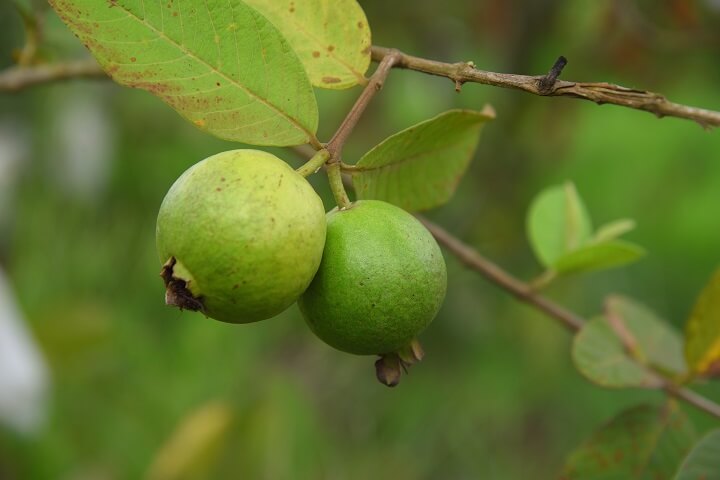
This tropical fruit tree is perfect for container growing. Place in full sun with compost-rich soil that has a PH between 5 and 7. Water two to three times per month in the growing season and sparingly in the winter and fertilize in early spring and mid-summer.
Jujube – Zones 6-10
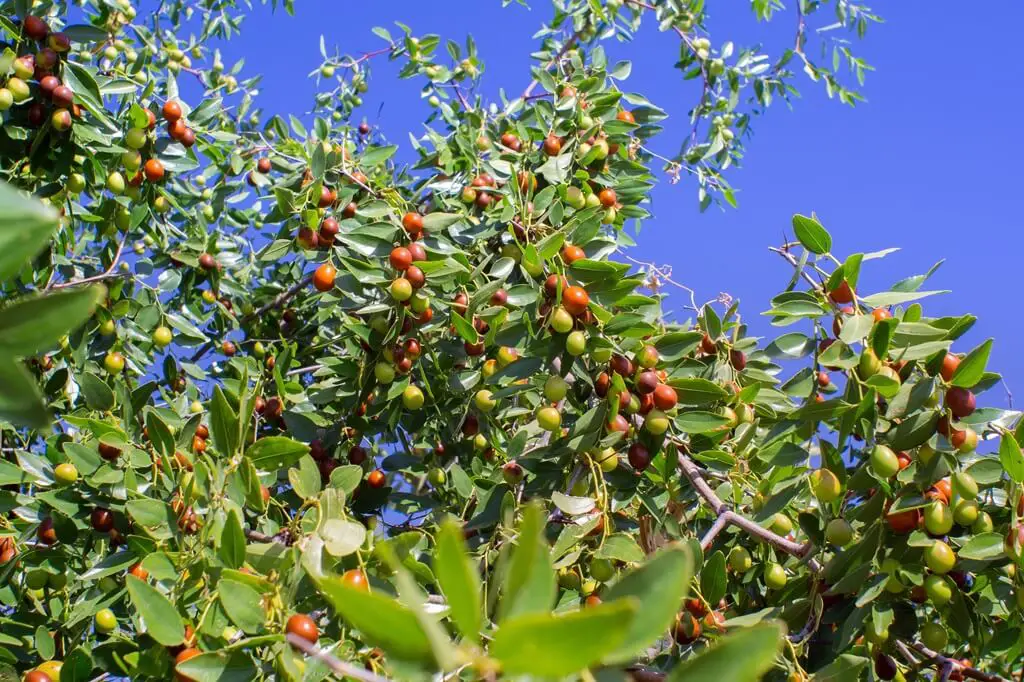
Also known as Chinese date, Jujube trees tolerate drought, poor soil, and heat, making them an excellent low-maintenance choice for bucket growing.
They need full sun, well-draining soil, and moderate watering. While some varieties are self-fertile, having multiple trees increases fruit production.
Jujube trees can handle winter temperatures down to 0°F, so they don’t always need to be brought inside in colder zones.
Loquat – Zones 8 to 9
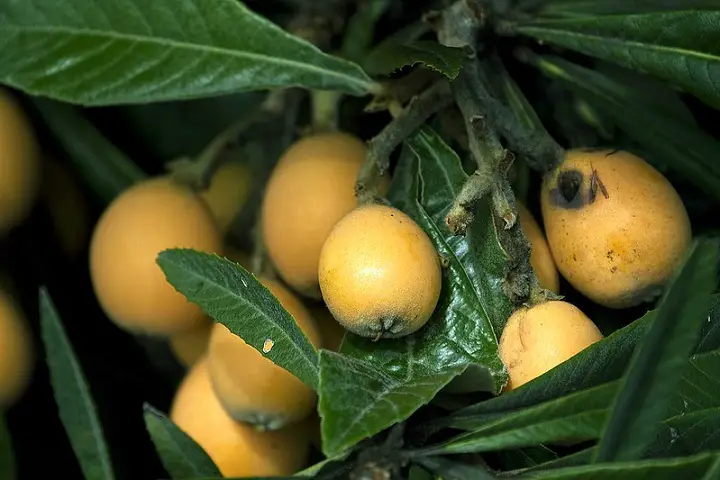
These evergreen trees with dark, leathery leaves are one of the easiest to grow in containers. You can find them in online nurseries or get an offshoot from anyone who has one in their yard. Place in full sun and protect from temperatures below 15 degrees.
Mango – Zones 9 to 11
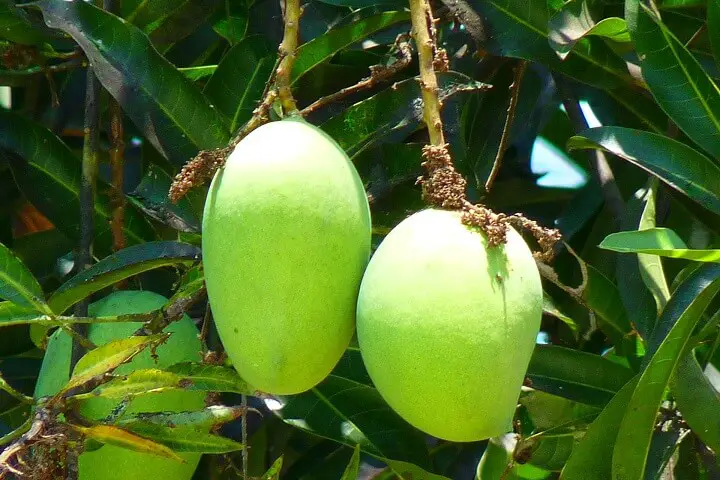
If you can find a mango plant or grow one from seed, lucky you! Give your plant well-draining, highly nutritious soil to begin with and keep it in a warm, sunny spot. Snip off the flowers the first year to stimulate growth and prune in the late winter to maintain a small size.
Mulberry – Zones 5-9
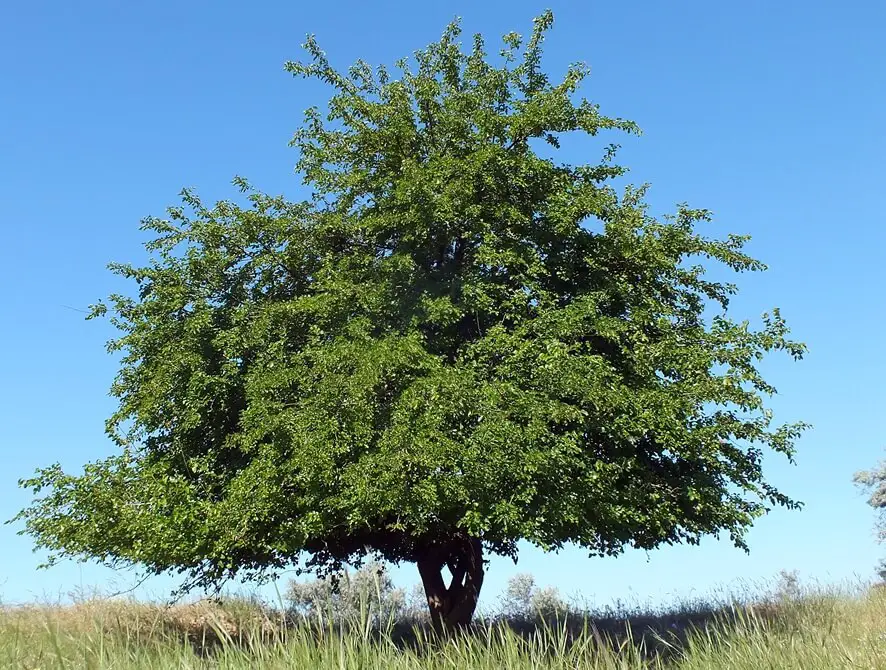
Mulberry trees grow fast and produce heavily, making them perfect for bucket growing. Choose a dwarf mulberry variety like ‘Dwarf Everbearing’ to keep it compact and manageable.
Mulberries thrive in full sun, require moderate watering, and do best in well-draining, slightly acidic soil. Prune regularly to maintain size, and enjoy fruit within the first year of planting!
Peach/Nectarines – Zones 5 to 9
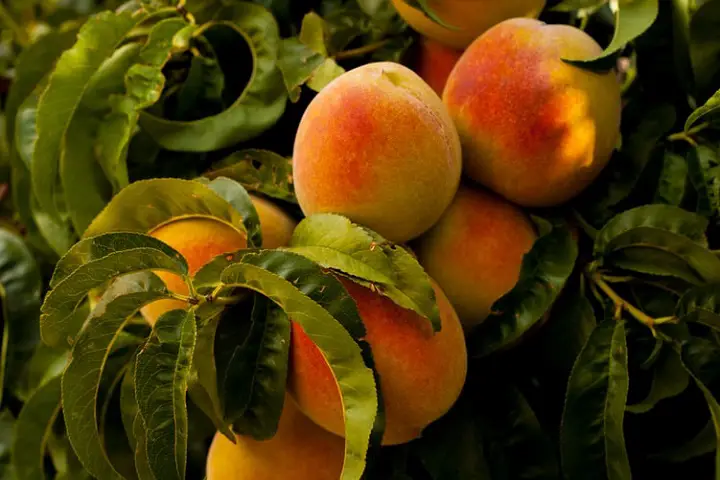
Choose a variety suited to your location. Peaches need 500 chill hours to go dormant and produce prolific fruit, but there are low-chill varieties for warmer regions. Place your plant in full sun and water whenever the soil dries out.
Fertilize every couple of weeks during the growing season with a phosphorus-rich liquid fertilizer. Cut back on water and fertilizer in early fall and protect your tree in temperatures under 20 degrees F.
Pear – Zones 4 to 8
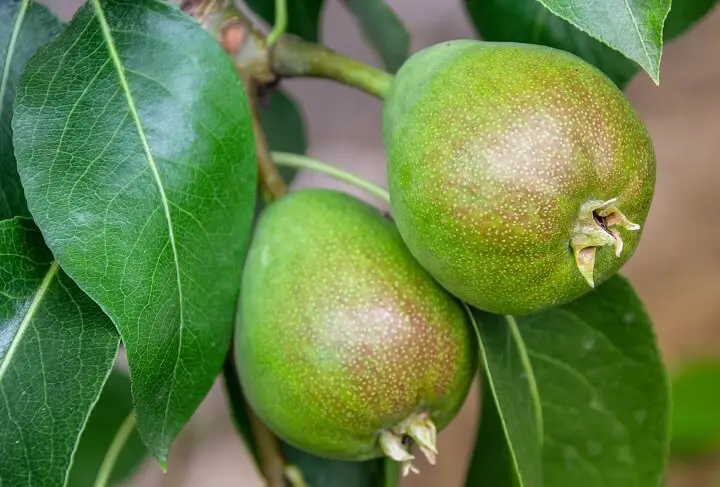
Choose a cultivar that is self-fertile, or plan on having multiple plants to cross-pollinate. Place pears in full sun and water as often as needed to keep soil from drying excessively. Fertilize lightly at the beginning of spring and prune annually to shape.
Plum – Zones 8 to 10
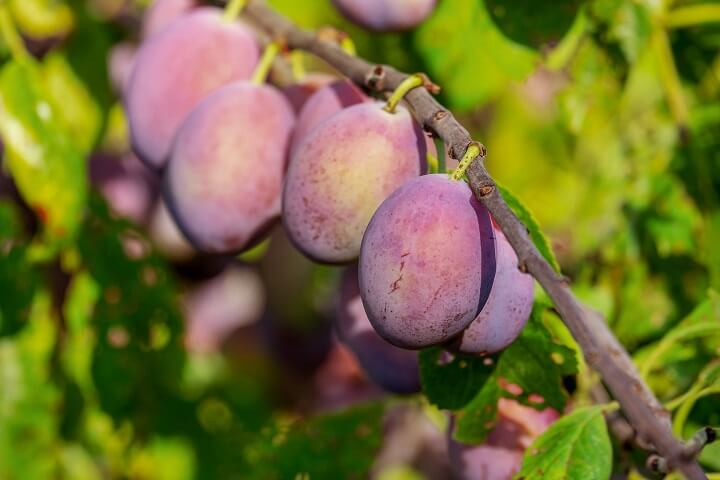
Place in full sun and water weekly in the absence of rain. Fertilize at the beginning of spring. Prune any suckers from the base.
Pomegranate – Zones 9-11

Shallow-rooted pomegranates are very easy to grow in pots. Full sun will result in the most prolific fruiting. Water deeply and regularly and fertilize every few weeks during the growing season with an 8-8-8 fertilizer.
Can be overwintered in a garage if the plant goes dormant, but can resist dormancy if kept indoors at over 55 degrees F.
Star Fruit – Zones 9 to 11

This beautiful, exotic tropical fruit requires temperatures above 60 degrees F to flower and fruit. Place in full sun in acidic soil with a PH between 5.5 and 6.5. Do not overwater, and apply a slow-release fertilizer during the growing season.
A few other fruits you can grow in buckets include blackberries, blueberries, goji berries, lychee, and raspberries. While not technically trees, you can grow vining berries with a structure like a tomato cage to contain them to a narrow space to a great result.
You May Also Like:
The post 17 Best Fruits to Grow in Buckets appeared first on Homestead Survival Site.
from Homestead Survival Site https://ift.tt/KJkbo1L
No comments:
Post a Comment